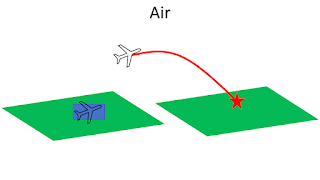The Nuclear Triad
The air leg consists of long-range strategic bombers which are the most flexible part of the triad as they can be recalled after take-off.
Bombers are at risk during flight as they can be shot down
by air defences systems and fighters, especially when armed with gravity bombs
requiring them to go deep inside enemy airspace.
They can also be armed with air launched cruise missiles which can be launched from thousands of kilometres away, so the bombers don’t need to enter enemy airspace.
Under normal circumstances bombers are very vulnerable to a
surprise attack as they can easily be destroyed on the ground before take-off.
Even when on high alert, it would be difficult for bombers to become airborne and escape an attack before warheads arrive.
The only way to guarantee the survival of any bombers is to have a proportion armed and airborne at all times.
The land leg is the most responsive part of the triad, with
silo-based missiles able to be launched within as little as five minutes.
Missile silos are hardened to resist damage from nearby nuclear explosions however with accurate enough warheads these silos would be unlikely to survive an attack.
Therefore, to guarantee their survival, the missiles must be launched before enemy warheads arrive, creating a destabilising “use it or lose it” situation.Road and rail mobile missiles in their garrisons are even more vulnerable to attack as their shelters are not as well hardened as missile silos, they also take longer to launch than missiles housed in silos reducing the chance that they could be launched before enemy warheads arrive.
However, when dispersed they are almost invulnerable as an enemy would have to bombard an extremely large area to destroy them.
The sea leg is the most survivable part of the triad as
ballistic missile submarines can patrol vast areas of ocean to avoid detection.
Submarines in port are extremely vulnerable to a surprise attack as a single nuclear blast could destroy multiple submarines before they have had a chance to fire their missiles.
Therefore, it is essential to maintain a proportion of submarines on patrol at any one time to ensure their survival.
Finally, in order for a nuclear triad to act as a functional
deterrent you must have a secure and survivable command, control, and
communication system.


















Comments
Post a Comment